Art & Exhibitions
Why is Ai Weiwei One of the World’s Most Famous Artists?
Fearless and fascinating, what will he do next?
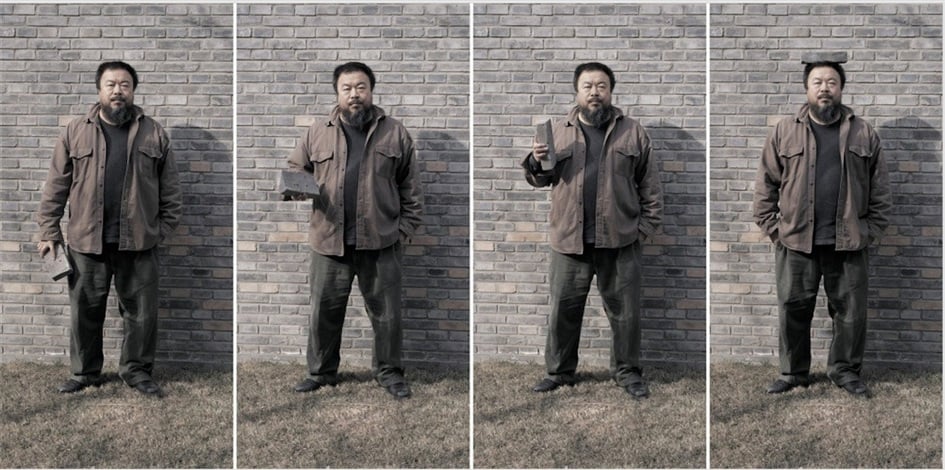
Photo: courtesy Hamburg Kennedy Photographs
Fearless and fascinating, what will he do next?

Amah-Rose Abrams

Ai Weiwei is one of the world’s most famous artists, consistently topping power lists and grabbing headlines around the globe. Even to people unfamiliar with the art world, Ai is a source of fascination and admiration. What exactly makes this artist so captivating to so many?
If you’d like to make up your mind yourself, there are a few shows currently on view for you to visit and see his work in person. In London, the Royal Academy of Arts is currently hosting a major retrospective titled simply “Ai Weiwei,” running through December 13, 2015, while gallery Elisabetta Cipriani presents an exhibition of specially commissioned jewelry by Ai, “Rebar in Gold,” through January 16 2016. In Beijing, Galleria Continua presents the artist’s very first solo exhibition in his native country, on view through December 6, 2015.
By now, Ai is known as much for his activism as he is for his art. His works are often highly political, and unapologetically tackle China’s history, human rights abuses worldwide, and the global imbalance of power.
In 2008, Ai had established himself as a key figure in the Beijing contemporary art scene. He had moved back to China after a decade spent in New York, where lived following his graduation from the Parsons School of Design. In Beijing, he quickly gained a following following. He became so popular and well-regarded that he was hired as a consultant to work with architects Herzog and de Meuron to design the Bird’s Nest Stadium for the 2008 Beijing Olympics—a huge endorsement from the government.
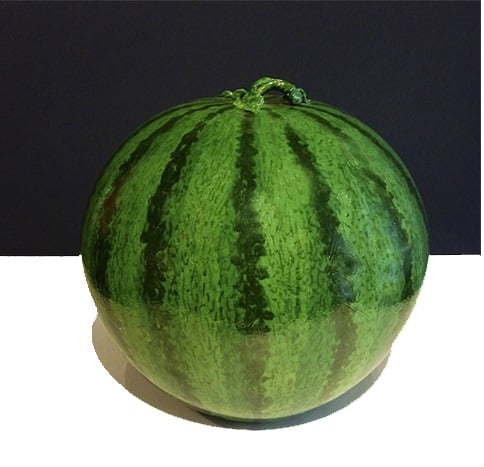
Ai Weiwei, Watermelon (2006). Courtesy of Mark Borghi Fine Art Inc.
This moment became a turning point for Ai. Upon on seeing the dismal working conditions at the Olympic stadium first-hand, he began to speak out against Chinese authorities. This was the beginning of a long conflict between Ai and the Chinese government, which continues to this day.
Ai took to the internet to spread his views and ideas via his Twitter account and—now defunct—blog. Twitter has since been barred in China, yet Ai has managed to maintain a strong presence and currently has 298,000 followers. In 2008, he began to post research gathered for his piece Straight (2008), which explores the circumstances surrounding the high number of schools that crumbled during the Sichuan earthquake that year. He posted the names of those who died in the tragedy, most of whom were children, seeking to highlight the government corruption that allegedly lead to their deaths. Straight, which remains one of his most poignant and memorable pieces, consists of 150 tons of straightened steel rebar, recovered from buildings collapsed by the Sichuan earthquake.
In response to this bold act of dissent, the government swiftly cracked down on the artist.
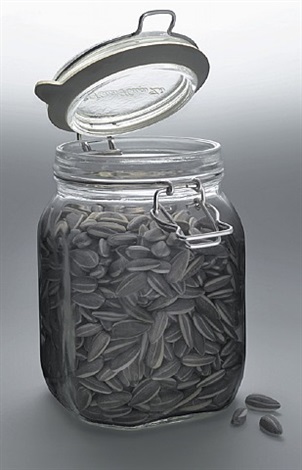
Ai Weiwei Kui Hua Zi (Sun Flower Seeds), (2009). Courtesy of Carolina Nitsch Contemporary Art.
Following a series of escalating altercations with the authorities, such as the shuttering of Ai’s blog and the bulldozing of his government-funded studio in 2010, Ai was finally “disappeared”—not an uncommon occurrence among Chinese dissidents—for three months in 2011. Given his extremely high profile—he had just been declared the runner-up for the TIME magazine Person of the Year—there was an instant backlash, with an international outcry demanding his whereabouts and release. Emblazoned on the side of Tate Modern, where he has installed his celebrated work Sunflower Seeds (2011), were the words: “Release Ai Weiwei.”
After a total of 81 days in captivity, Ai was released and placed under house arrest, his passport confiscated. Ai quickly circumvented China’s web restrictions and continued to speak out online, and resumed his prolific output as an artist.
His installation at the Venice Biennial in 2013, S.A.C.R.E.D., recreated the cell he had been held in. Ai went on to stage several large-scale museum exhibitions, including “According to What?” at the Brooklyn Museum in New York and the Perez Art Museum in Miami, “Ai Weiwei: Evidence” at Martin Gropius Bau in Berlin, and “@Large” in Alcatraz, San Francisco, in 2014. He also created an internet work titled Moon (2014) with Olafur Eliasson, which was exhibited at his representing gallery in London, Lisson Gallery.
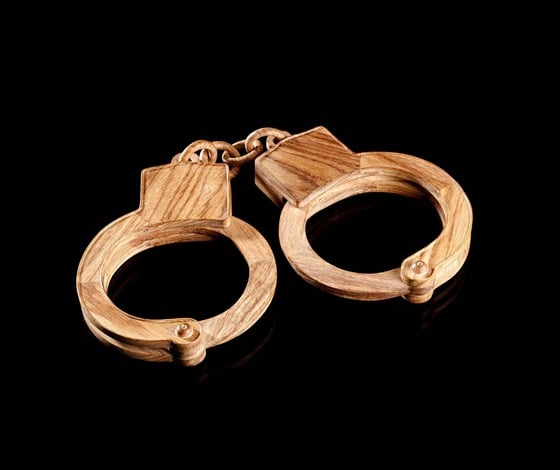
Ai Weiwei, Handcuffs (2012). Courtesy of Haines Gallery.
In the summer of 2015, Ai was still unable to travel, yet there were whispers leading up to his current Royal Academy show; would he attend in person?
In a happy turn of events, Ai was allowed to leave China this summer and attend the aforementioned Royal Academy retrospective in London, thanks to some tricky diplomatic wrangling. He has now taken up a teaching post at Universität der Künste in Berlin.
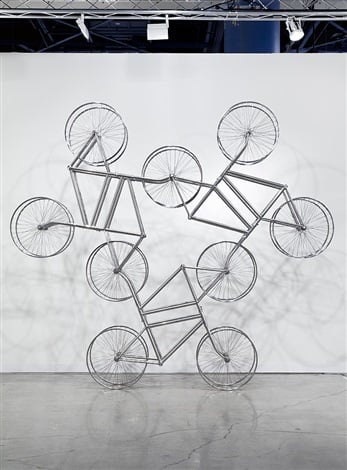
Ai Weiwei, Forever (2013). Courtesy of Lisson Gallery.
Never one to be suppressed, Ai has also recently started a campaign collecting LEGO bricks in response to the Danish brand’s refusal to sell him their product for his upcoming show, “Andy Warhol-Ai Weiwei,” at the National Gallery of Victoria, Melbourne. This event has once again demonstrated Ai’s power to rouse the masses, as people from around the world began donating LEGO by the thousands to his cause. He is currently posting LEGO-like pixilated images of dissidents in captivity to his Instagram account, which many interpret as a clue about what his upcoming project will look like.
Amazingly prolific, endlessly creative, and still fearlessly speaking out and fighting for human rights, Ai Weiwei has finally managed to leave China—perhaps forever. What the future holds for this influential artist is a mystery, but what we can say for sure is that no matter what happens, the world will be watching.